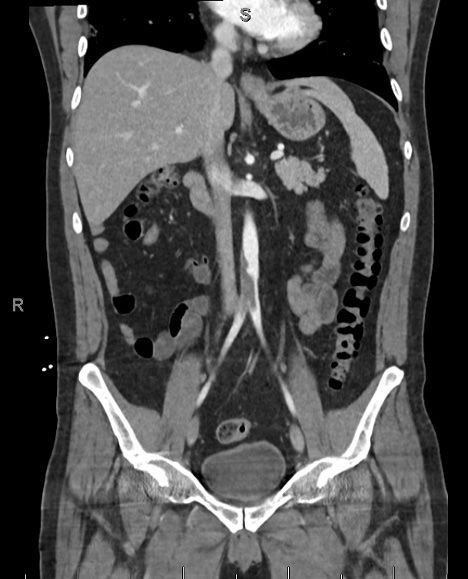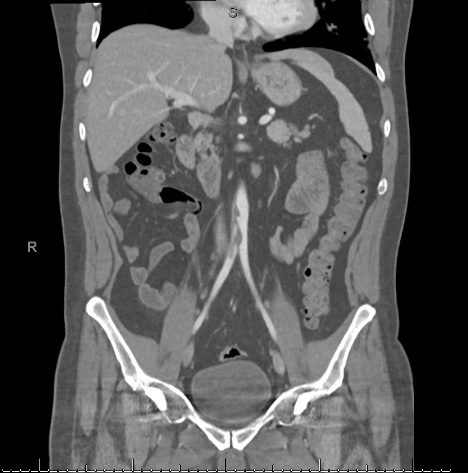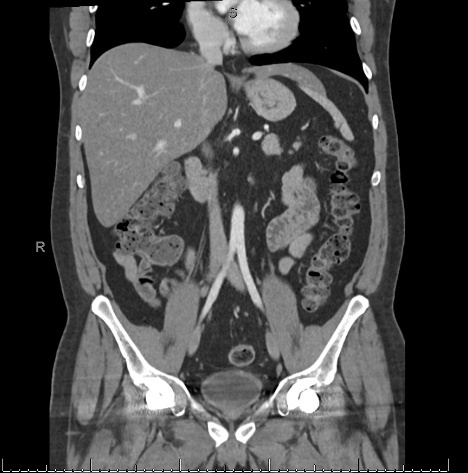Resolution Of Infrarenal Aortic Thrombus Using Anticoagulation And Antiplatelet Therapy In Patient With Covid-19 Coagulopathy
Channa Blakely, Christine Shokrzadeh, Michael B. Silva, Jr, Mellick T. Sykes, Jennifer Worsham.
UTMB, Galveston, TX, USA.
DEMOGRAPHICS: This is a 41-year-old Hispanic man with a medical history of HIV and hypertension.
HISTORY: A patient with recent COVID-19 hospitalization presented with abdominal pain, nausea, and vomiting with non-occlusive infrarenal aortic thrombus extending into both common iliac arteries. There was no evidence of visceral or lower extremity embolization. Distal pulses were palpable, motor, and sensory function intact. Intravenous therapeutic heparin and antiplatelet therapy were begun. Patient remained asymptomatic and was discharged on oral anticoagulation and antiplatelet therapy on hospital day five.
PLAN: An acute non-occlusive aortic thrombus secondary to COVID-19 coagulopathy was treated with anticoagulation and antiplatelet therapy alone, with near complete resolution at 2 weeks and 6 months post-discharge.
DISCUSSION:
COVID-19 patients can become hypercoagulable leading to both venous and arterial thrombosis. Acute aortic thrombi, although rarely seen, commonly require operative intervention. There was marked improvement in the aortic thrombus on repeat CT scan 4 days later. CT scan at 2 weeks post-discharge showed near resolution of the aortic thrombus without extension into the iliac arteries. CT scan at 6 months showed continued improvement. Patients with COVID coagulopathy and asymptomatic aortoiliac thrombus can be successfully treated with oral anticoagulation and antiplatelet therapy with close clinical and imaging follow-up.
 Image 1: Aortoiliac thrombus on initial CT scan
Image 1: Aortoiliac thrombus on initial CT scan
 Image 2: CT scan 4 days later showing interval improvement
Image 2: CT scan 4 days later showing interval improvement
 Image 3: CT scan 6 months later showing near complete resolution
Image 3: CT scan 6 months later showing near complete resolution
Back to 2022 Abstracts
